Khunajawdge
Toto El Mundo!
A while ago I began this post see Clicky with a quest to drop some wattage. I have finally managed to get (after returning a couple incorrectly ordered LED’s for credit) some LED’s from; superbrightleds.com (I don’t work for them and I am not affiliated). This is what I finally ended up ordering.
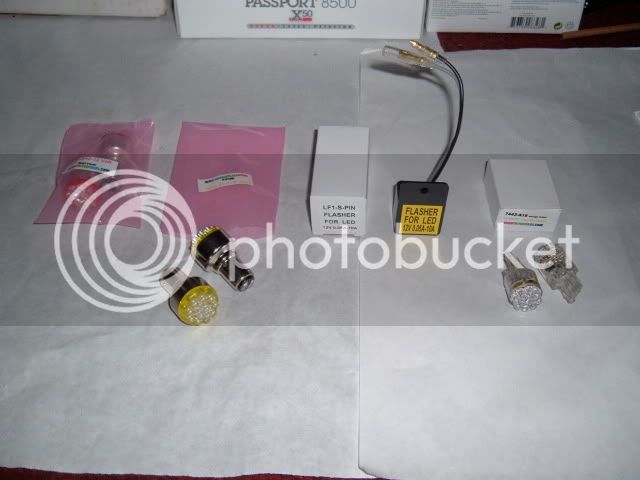
Parts include;
2 BA15 12-LED bulbs – Amber 1157-A12 Wide
2 BA15 12-LED bulbs – Red 1157-R12 Narrow
2 15-LED Wedge base bulbs – Amber 7443-A15
1 Universal Motorcycle Flasher – LF1-S-PIN
The total I paid for parts and shipping was $43.89
Previous to this recent modification, many moons ago I had changed out my rear running light holders to dual filament bulb holders, so I would have both a tail light (red) and rear running lights (amber) visible continuously from the rear. These running lights alone were subtracting a total of 14 watts from the OEM budget for the watts necessary to run the bike. Consequently, when I ordered the LED’s for the rear of the bike they were ALL dual filament equivalents to the OEM incandescent bulbs.

The front running lights (amber) had to be the blade type rather than the barrel type mounting used in the tail, due to Yamaha’s choice of bulb holders in the front.

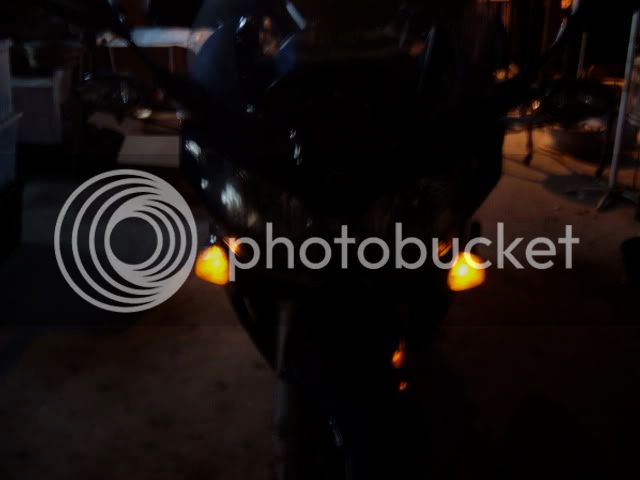
After replacing ALL the incandescent bulbs with the LED’s in the tail and front lower side fairings, I removed the inner dash fairing pieces and found the Flasher relay behind the dash. I then found the brown/white wire from the flasher, cut it, stripped it, and added bullet connectors. The LED Flasher from superbrights was “supposed to” correct the interference between the less current draw to power up the LED’s which sends a warning to the blinker lighting circuit to blink at a faster rate as a warning of a burned bulb. Unfortunately, after installing this unit the fast pulsing blink wasn’t 100% corrected. Now, my blinkers pulse like this; blink, blink-blink, blink-blink-blink, then pause & repeat. Not a bad thing(?) in my opinion, just different than a standard blinker pulse. Here is a pic of where the OEM blinker circuit was modified with the above LED Flasher.
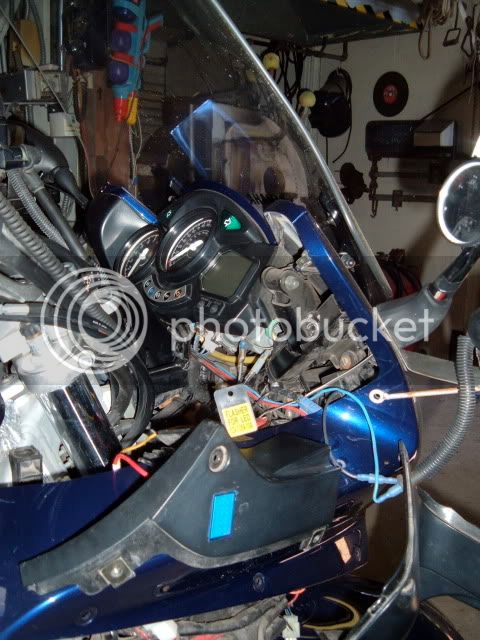
And here is a close up of the bullet connectors that allow the addition of the LED Flasher in line with the OEM Blinker Relay.
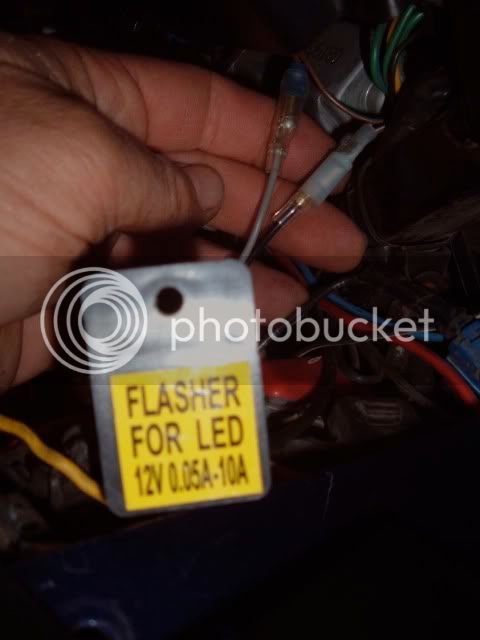
The LED tail, running, and brake lights, and the turn signal blinkers are not much brighter if at all, than the OEM incandescent bulbs, but the LED’s are supposedly drawing nearly 40 watts less in performing the same tasks.
Here is the rear lit up with LED's
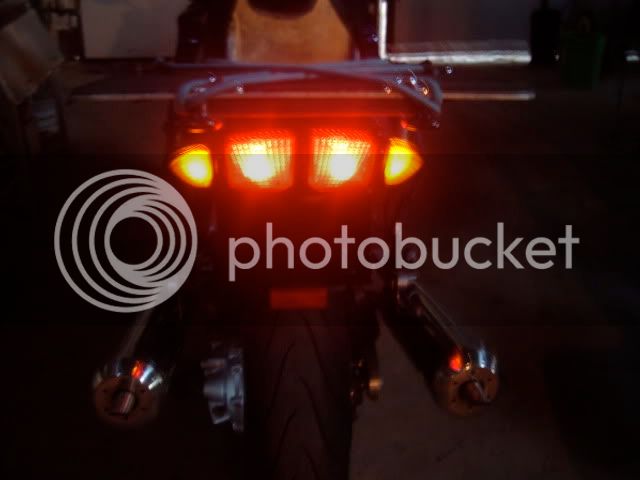
YMMV

Parts include;
2 BA15 12-LED bulbs – Amber 1157-A12 Wide
2 BA15 12-LED bulbs – Red 1157-R12 Narrow
2 15-LED Wedge base bulbs – Amber 7443-A15
1 Universal Motorcycle Flasher – LF1-S-PIN
The total I paid for parts and shipping was $43.89
Previous to this recent modification, many moons ago I had changed out my rear running light holders to dual filament bulb holders, so I would have both a tail light (red) and rear running lights (amber) visible continuously from the rear. These running lights alone were subtracting a total of 14 watts from the OEM budget for the watts necessary to run the bike. Consequently, when I ordered the LED’s for the rear of the bike they were ALL dual filament equivalents to the OEM incandescent bulbs.

The front running lights (amber) had to be the blade type rather than the barrel type mounting used in the tail, due to Yamaha’s choice of bulb holders in the front.


After replacing ALL the incandescent bulbs with the LED’s in the tail and front lower side fairings, I removed the inner dash fairing pieces and found the Flasher relay behind the dash. I then found the brown/white wire from the flasher, cut it, stripped it, and added bullet connectors. The LED Flasher from superbrights was “supposed to” correct the interference between the less current draw to power up the LED’s which sends a warning to the blinker lighting circuit to blink at a faster rate as a warning of a burned bulb. Unfortunately, after installing this unit the fast pulsing blink wasn’t 100% corrected. Now, my blinkers pulse like this; blink, blink-blink, blink-blink-blink, then pause & repeat. Not a bad thing(?) in my opinion, just different than a standard blinker pulse. Here is a pic of where the OEM blinker circuit was modified with the above LED Flasher.

And here is a close up of the bullet connectors that allow the addition of the LED Flasher in line with the OEM Blinker Relay.

The LED tail, running, and brake lights, and the turn signal blinkers are not much brighter if at all, than the OEM incandescent bulbs, but the LED’s are supposedly drawing nearly 40 watts less in performing the same tasks.
Here is the rear lit up with LED's

YMMV





























![fjackets Real Lambskin Leather Biker Jacket — Quilted Cafe Racer Zip Up Moto Leather Jackets For Men | [1100085] Johnson Brown, XL](https://m.media-amazon.com/images/I/41I7Pm1f+vL._SL500_.jpg)
































